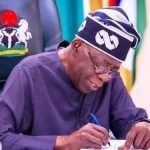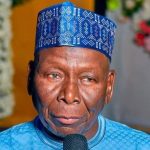By Abubakar Muhammad Usman
Artificial Intelligence (AI) has been celebrated as the next frontier of global education. From lesson planning to automated grading, AI is reshaping how teachers teach and how students learn. In Nigeria, particularly in Kano State, the government has made ambitious declarations about digitizing classrooms, expanding ICT access, and preparing schools for the future.
But behind the grand visions and policy statements lies a quieter story: the teachers who are supposed to drive this revolution are being left behind.
Private Schools Testing the Waters
In Kano’s well-resourced private schools, some teachers are already experimenting with AI—though of their own volition.
At Crescent International School in the Kano metropolis, 34-year-old English teacher Aisha Musa uses ChatGPT to draft lesson outlines and generate comprehension exercises.
“AI makes my work faster,” she said. “Before, I would spend hours designing lesson notes and assignments. Now I can generate examples in minutes and then adapt them for my students.”
But Aisha admits she is self-taught. “There has been no formal training. Everything I know comes from my own research online. The government or education authorities have never given us guidance on this.”
Her colleague, Mr. Joseph Udo, a Physics teacher in the same school, shares a similar story.
“AI helps me simplify complex concepts,” he explained. “If I type in a physics law, I get examples and analogies that make teaching easier. But without a policy or training, there’s a danger of misuse.”
For teachers in private schools, access to laptops, internet connectivity, and smaller class sizes makes it easier to explore AI tools. But even they agree that without an official framework, AI use in classrooms risks being haphazard and uneven.
Public School Teachers on the Margins
In Kano’s public schools, the situation is markedly different. At Government Girls Secondary School, Dala, Mrs. Hadiza Suleiman, a mathematics teacher with 10 years of experience, says AI is a distant dream.
“How can I talk about AI when I don’t even have a projector or a working computer in my classroom?” she asked. “My class sometimes has over 120 students. Even chalk and textbooks are not enough. Bringing AI into this environment is impossible for now.”
Her frustration reflects a wider reality. According to Kano’s education statistics, the average pupil-teacher ratio is 103:1 in primary schools, 52:1 in junior secondary, and 41:1 in senior secondary. Classrooms are overcrowded, infrastructure is overstretched, and teachers are overburdened.
At GSSS Zango, one of Kano’s public schools, Mustapha Garba, who teaches Government Studies, laughed when asked about AI.
“We are still struggling with electricity supply,” he said. “Sometimes we go days without power. How can you talk about AI when you cannot even guarantee light to turn on a computer?”
For him, AI remains an elite discussion. “Until rural and public schools are equipped with basic electricity, internet, and trained teachers, AI will only widen the gap between private and public schools.”
The Fear of Irrelevance
Beyond infrastructure gaps, teachers also share anxieties about AI’s long-term implications for their profession.
At Dawakin Kudu Boys Secondary School, Ibrahim Ali, an English teacher, expressed a common fear: “AI can make students lazy. If they can ask a machine to write essays or solve equations, they may stop thinking critically.
“Worse, one day AI might make us teachers irrelevant. If the system keeps improving, will parents and the government still see the need to invest in human teachers?”
Others see it differently. Rukayya Abdullahi, a history teacher at GSS Suntulma, believes AI could actually empower teachers if deployed correctly.
“AI cannot replace the human touch in teaching,” she said. “Students need mentors, role models, and people who understand their struggles. What AI can do is reduce our workload and give us more time for real interaction.”
Her view underscores a paradox: teachers are not rejecting AI outright, but they want structured support and policies that help them adapt rather than leaving them to guess.
Where Is the Policy on AI?
Despite Kano’s loud ambitions for digital education, the state lacks a standalone policy on Artificial Intelligence in schools. What exists are broad ICT and education strategies under the Kano State Development Plan 2020–2025.
The plan promises ICT-based solutions, smart classrooms, internet connectivity, teacher training, and STEM promotion, but AI is never explicitly mentioned.
Teachers interviewed for this story say they have not received any guidelines or formal training on AI usage.
“We only hear about AI in the news, not from government circulars or workshops,” said a teacher who requested anonymity for fear of victimization. “Until today, there is no policy that tells us how to use it or even if we should use it.”
Sources at the Kano State Ministry of Education, who requested anonymity because they were not authorized to speak, confirmed that “there is currently no specific AI policy in place; most of what we have falls under general ICT or digital education strategies.”
At the time of filing this report, the Commissioner for Education, Ali Haruna Makoda, could not be reached for comment, while the Executive Secretary of the Kano State Senior Secondary School Management Board did not respond to inquiries.
Expert Says Policy Vacuum Hurts Teachers Most
A tech expert in Kano, Musa Barau, believes the policy gap is the biggest barrier.
“AI will not integrate itself into classrooms,” he said. “Teachers need structured training, schools need infrastructure, and the government needs to provide regulatory frameworks. Without these, AI will only widen inequality.”
He also warned about unregulated AI use, emphasizing that “there are ethical concerns—plagiarism, misinformation, data privacy. If there are no policies guiding teachers and students, misuse could cause more harm than good.”
A Digital Revolution Without Its Drivers?
The absence of a dedicated AI framework in Kano raises questions of inclusivity. Without policies, training, and structured support, teachers—the very drivers of the education system—risk being left behind in the digital revolution.
For now, Kano’s classrooms reveal a paradox: while technology promises to transform education, the teachers who should lead this transformation are struggling to find their place in it. Without them, the state’s ambition for AI-driven education may remain a lofty idea rather than a lived reality.





